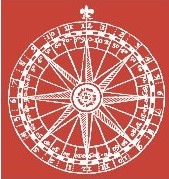Air Quality and the Senses in Early Modern Italy
Using printed and archival records, this article analyzes the sensory practices associated with air quality in sixteenth- and seventeenth-century Italy. Air pollution was a prime concern for early modern Italians, particularly in urban centres where…
Listed in Article | publication by group Iter Community
Version 1.0 - published on 16 Oct 2025
Licensed under Creative Commons BY-NC 4.0
Description
Using printed and archival records, this article analyzes the sensory practices associated with air quality in sixteenth- and seventeenth-century Italy. Air pollution was a prime concern for early modern Italians, particularly in urban centres where industry, density, and frenetic sensescapes were thought to prompt chronically unhealthy airs. According to early modern experts, air quality was at the root of individual and public health. My analysis shows how Italians relied on a robust set of sonic and olfactory tools to cleanse the air and craft healthy environments. Simultaneously, a contrasting set of sounds and smells were thought to pollute the air. The sensory practices surrounding air quality reveal the highly localized and personalized nature of early modern environmental practice. This article argues that entwined social and environmental conceptions of purity and pollution shaped sensory, social, and environmental experience in the premodern city.
Cite this work
Researchers should cite this work as follows:
Tags
Notes
Original publication: Rombough, Julia. "Air Quality and the Senses in Early Modern Italy." Renaissance and Reformation 44 (2): 2021. 39-60. DOI: 10.33137/rr.v44i2.37520. This material has been re-published in an unmodified form on the Canadian HSS Commons with the permission of Iter Canada / Renaissance and Reformation. Copyright © the author(s). Their work is distributed by Renaissance and Reformation under a Creative Commons Attribution-NonCommercial 4.0 International License. For details, see https://creativecommons.org/licenses/.
Publication preview
Iter Community
This publication belongs to the Iter Community group.
When watching a publication, you will be notified when a new version is released.
